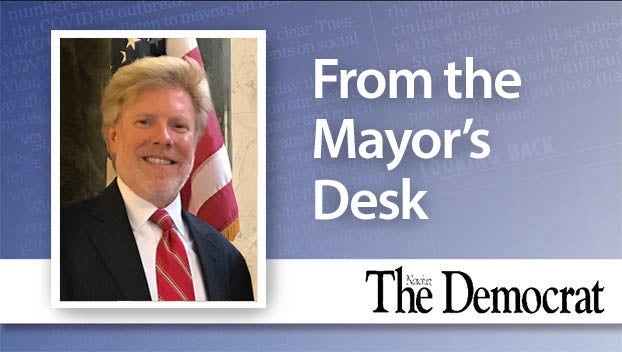More lessons from Weimar: Part 9
Published 12:47 am Sunday, September 17, 2017
In 1923, the Nazis tried to shoot their way into power and failed miserably. From 1928 to 1932, they tried to win a majority of the vote in open, free elections, and failed, less miserably. They did become the largest of the 10 parties represented in the Reichstag (the German parliament), but they were never able to top 37 percent in any election. The reality is that Hitler came to power only through politician’s cynical perversions of the democratic system. Beginning in 1930, this process would conclude in the fateful period from July 1932 to January 1933.
Nazism reached its electoral peak in the balloting of July 1932, but it is often overlooked that it then experienced a series of sizeable electoral defeats. In another election only four months later, they lost two million votes and 34 Reichstag seats. The losses then continued in a round of municipal elections. Hitler’s wealthy backers began to waver. The party was nearly bankrupt. There was growing dissent within its ranks. In particularly bad news for the Nazis, the economy seemed to be improving. The scholarly consensus is that this may well have been the beginning of a real, final decline for Nazism. The people of Germany had spoken and the majority had rejected Hitlerism.
Which makes the next act in the drama all the more excruciating. At the very moment when the Nazis were faltering, a conservative “cabinet of experts” persuaded the increasingly senile President Paul von Hindenburg to appoint Hitler to the Chancellorship (the prime ministership).
These were the same conservatives who had coddled the violently radical Right for the past 15 years. Now they sought to use the Nazis’ crude thuggery and populist appeal as a front to gain permanent power. Hitler, the rabble-rousing political outsider, would be “housebroken” by a cabinet stacked with conservatives. Challenged about the dangers of giving executive power to the erratic, egomaniacal Hitler, one replied, “You are mistaken. We’ve hired him.” It was one of the most catastrophic miscalculations in world history.
Of course, “Chancellor Hitler” was not yet a dictator in January 1933, but he soon would be. Only one month after assuming office, he turned an arson attack on the Reichstag building by a single mentally-disturbed Dutchman into a “national security emergency” necessitating, he claimed, a suspension of civil liberties. Subsequently, working within the Weimar system, he would complete its destruction. By mid 1934, Adolf Hitler was the unchallenged Führer.
The lesson cannot be more obvious. Hitler’s biographer, Ian Kershaw, condemns “the blindness of the conservative right” in casually handing power to “the dangerous leader of a political gangster-mob.” One who would, unsurprisingly, betray the conservatives too, in due time. Some who helped Hitler into power in 1933-34 would be participants in the plot to assassinate him in 1944. Their attempt at penance for their earlier transgression would fail. But with millions already dead, it was a bit too little, a bit too late.
But German historian Karl Bracher is even more pointed. He declares that the conservatives were not just reckless in handing executive authority to Hitler. He had no other means to gain it. If not for “the dismal, unresisting capitulation of the German elite,” Hitler “would probably never have crashed the gates of power.” This requires emphasis. The grand, impersonal forces of history — war, revolution, reparations, hyperinflation, depression — led to Hitler’s rise. However, it was only the mercenary partisanship of a handful of “elites” that brought this unstable madman to power. Republics don’t simply die, people kill them.
Next week, the final lesson from Weimar.
Jim Wiggins is a retired Copiah-Lincoln Community College history instructor.





